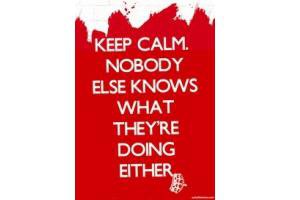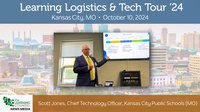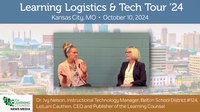Schools and higher education institutions are facing down a serious disruption in learning content, going from paper to digital in all things. For nearly 100 years, classroom teaching has centered primarily on the textbook. One of the few, major publishers would send out their reps to sign multi-million dollar deals with School Boards or Superintendents. Thus the common assumption was that the schools do a single deal every five-to-seven years as needed to replace all textbooks and related materials. In colleges and universities the adoption was complicated with all the individual professors choosing their own.
We are now in an age when there are more than 700 companies vying for the coveted digital publisher relationship with schools, the majority of which have very little “share-of-wallet” while a mere handful of the old-time big publishers still have the majority and are still selling paper textbooks. The biggest reason for the inequity of market access is that the innovative start-ups are largely unknown through lack of adequate marketing. They are even confused with the prior reality and thought “expensive” or “outdated.” In fact, in most schools the revolt against the incumbent large publishers is at a fevered pitch and bleeds over onto any new all-digital publisher. A failure to innovate early by the large old-time publishers, though now there are plenty of digital materials from them, branded them as never-do-wells with voracious money-hungry self-interest.
It’s remarkable to consider that any type of “content” can be digital these days, although perhaps not invitingly aesthetic or interactive. The printed word, old photographs and video not created or captured by a digital device, all can be “digitized” with a little bit of effort. This is what teachers are doing all over the U.S. right now, in fact. A sort of a “create-your-own-curriculum” bonanza is going on, largely without high-design or features. These various items of content are being shared with colleagues, friends, family, and the world at large on personal webpages, posted at sharing sites and professional networks. Altogether, the content creation by educators themselves just went into a whole new dimension in the past few years. It is at mind-staggering heights of generation.
In days gone by, and even now in most places, teachers organized their lesson planning around the textbook. In the 1970’s publishers stepped beyond the realm of the textbook and encyclopedia, into filmstrips or movies, workbooks and professional development. These and other content pieces became supplemental or augmentative materials around lessons still largely centered on a textbook.
With all of these content materials the teacher/professor was at the front of the classroom, leading a group. That is how the software industry has first modeled itself, to serve the teacher. Materials like the textbook were not like novels, they were built into chapters to easily fit into one-day lesson plans on that subject.
With devices blossoming on campuses and in schools, the teacher/professor is most likely to choose that which does not disrupt the power-structure of teacher-centricity. Or they may insist on making it for themselves. Administrators may be going along with this unwittingly, unaware of the full potentials of the transition to digital. Or the cost to allow the creation at the “nth-level,” or teacher level, rather than centralization.
A lot of the new digital content and curriculum has been built to serve the student. Some of it is highly interactive, many with gaming features built in to “gate” forward a student once an objective is received, all wrapped up in nice management features and more. It puts the student on a personally charted knowledge path and the teacher is now on the side, facilitating only. The great redemption of this is that the teacher is now remarkably more efficiently used to personalize. Other new digital content is less full-lesson-with-all-the-knowledge-bits-included and more interactive-content oriented. Something like an eBook with fun pictures to click on, which still allows for a more teacher-centric model while adding interest for the student. It’s the road-less-traveled of full digital curriculum, not just parts or types of learning content that is the most interesting divergent road to be taken right now. It is the road of greatest resistance, but which perhaps could hold the most promise for real gains through personalized learning for every student.
It’s not an easy thing for leaders to tell teachers, “We’re digital now. Gone are the days of ‘Students pull out your textbook and your notebook for taking notes.’” Teaching through a digital medium is a different form of teaching. It’s not standing at the front and lecturing. In fact, even primary schools are now using video lecture capture technology. In higher education, where lecture capture has long been in use, repeat-performance lectures are no longer needed and institutions can literally just “rack-mount” up another course using digital lectures and materials.
Gone also are the days when last year’s lesson plan sufficed for this year because the textbooks haven’t been updated.
There may not even be a textbook at all, as many schools stopped all purchase in the last two years to save up for digital devices.
Disruption is at hand for the way leaders lead and how teachers organize lessons. Many are lost in how to cope with it all, and making their own content while juggling a dramatically altered schedule where they are supposed to personalize for every student. With so much random motion brought suddenly and shockingly in by the mere addition of thousands of digital devices, new leadership is needed. No good leader leaves all their troops running in different directions.
Indeed, many places have started to take on the question of how to deal with mass curriculum change on a district-wide or State level. Device tactics have unleashed a mad scramble for learning content. Many institutions need a Strategy, not from the view of the devices only, but from the very architecture of learning delivery.
Does your school have a strategy, or just tactics? To face down the learning content disruption, you need a strategy.











